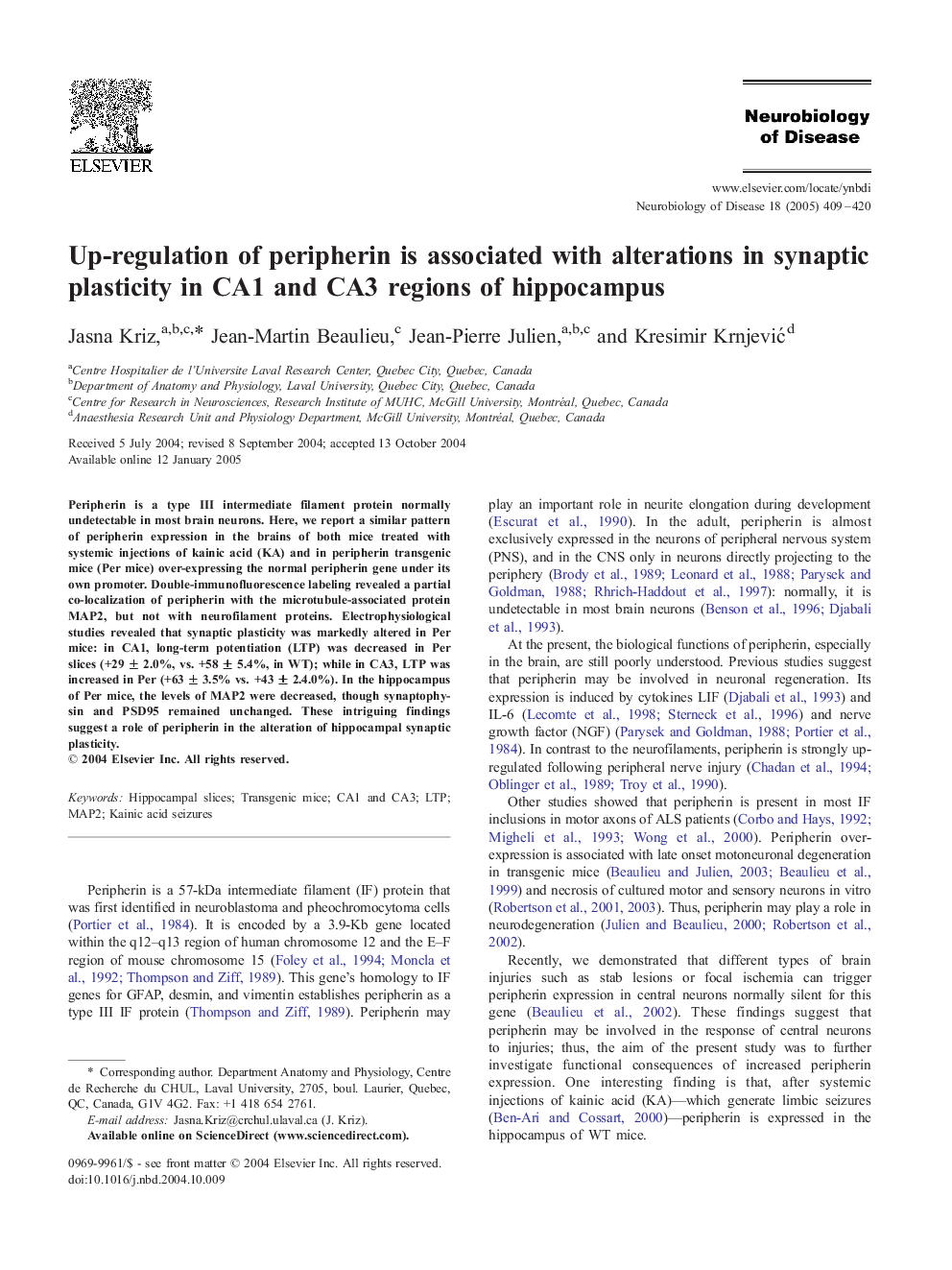| Article ID | Journal | Published Year | Pages | File Type |
|---|---|---|---|---|
| 9989819 | Neurobiology of Disease | 2005 | 12 Pages |
Abstract
Peripherin is a type III intermediate filament protein normally undetectable in most brain neurons. Here, we report a similar pattern of peripherin expression in the brains of both mice treated with systemic injections of kainic acid (KA) and in peripherin transgenic mice (Per mice) over-expressing the normal peripherin gene under its own promoter. Double-immunofluorescence labeling revealed a partial co-localization of peripherin with the microtubule-associated protein MAP2, but not with neurofilament proteins. Electrophysiological studies revealed that synaptic plasticity was markedly altered in Per mice: in CA1, long-term potentiation (LTP) was decreased in Per slices (+29 ± 2.0%, vs. +58 ± 5.4%, in WT); while in CA3, LTP was increased in Per (+63 ± 3.5% vs. +43 ± 2.4.0%). In the hippocampus of Per mice, the levels of MAP2 were decreased, though synaptophysin and PSD95 remained unchanged. These intriguing findings suggest a role of peripherin in the alteration of hippocampal synaptic plasticity.
Related Topics
Life Sciences
Neuroscience
Neurology
Authors
Jasna Kriz, Jean-Martin Beaulieu, Jean-Pierre Julien, Kresimir KrnjeviÄ,
